
Former Site of GeBi LinPing Railway Company in Gejiu City, Honghe
Chinese Name:个碧临屏铁路公司旧址
Overview of the Yunnan-Vietnam Railway (滇越铁路)
The Yunnan-Vietnam Railway was designed and constructed by the French at the end of the 19th century and the beginning of the 20th century. It connects Kunming (昆明) in China to Haiphong (海防港) in Vietnam via the Hekou (河口) border. This narrow-gauge railway is considered the first railway in Southwest China, running in a north-south direction. The British Daily once described it as the third largest engineering project in the world, comparable to the Suez Canal and the Panama Canal.
This travelogue focuses on the western branch of the Yunnan-Vietnam Railway, specifically the old railway site of GeBi LinPing (个碧临屏). A complete travel guide covering the entire Yunnan-Vietnam Railway will be provided later.
Construction of the Vietnamese section of the railway began in 1901 and was completed in 1903, while the Chinese section started in 1904 and was completed on March 30, 1910. The railway runs from Kunming North Station (昆明北站) to Haiphong Station (海防站) in Vietnam, covering a total length of 859 kilometers (465 kilometers in China and 394 kilometers in Vietnam) with 34 stations. Most of the stations in the Yunnan section have since been demolished or downgraded to passenger and freight stops, with only a portion remaining operational as of June 2003. The Kunyu River Railway, completed in 2014, has taken over the primary transportation tasks previously handled by the Yunnan-Vietnam Railway.
Historical Background
In the early 19th century, British and French colonizers invaded Southeast Asia and Yunnan, competing for control. France sought to exploit Yunnan’s rich mineral resources and planned to build a railway in the late 19th century for this purpose. In 1885, France secured “protectorate” status over Vietnam through the Sino-French War and gained trading and railway-building rights in several provinces in Southwest China. In 1895, using the excuse of their role in the “Three Nations Intervention” (Japan), France forced the Qing government to sign the “Supplementary Commercial Treaty,” granting them the right to extend the Vietnamese railway into China. In 1903, the Sino-French agreement on the Yunnan-Vietnam Railway was signed, leading to the establishment of the French Yunnan-Vietnam Railway Company.
Bi Se Zhai Station (碧色寨站): A Historical Hub and Museum
The first stop on the Yunnan-Vietnam Railway is Bi Se Zhai Station (碧色寨站). It is not just a train station; it is also a village located at the foot of a mountain, facing the rippling waters of Changqiao Sea (长桥海). Initially, it was home to only a few families, originally named “Po Xin” due to its hillside location. A French official stationed in Mengzi (蒙自) discovered its beautiful mountain-sea landscape and renamed it Bi Se Zhai.
On February 25, 1909 (or April 15, 1909), narrow-gauge trains from French Indochina entered Bi Se Zhai, establishing it as a special station. This quickly turned Bi Se Zhai into a bustling transfer station and trade market, a key hub for Yunnan’s import-export trade, and a “Little Paris” where domestic and foreign merchants gathered.
On April 1, 1910, the Yunnan-Vietnam Railway was fully operational. In 1936, the Ge Bi Shi Cun (个碧石寸) railway also connected here, attracting even more merchants to Bi Se Zhai. This site is a testament to China’s revolutionary history and the rise of the nation, intertwining with the narratives of industrial development, railway culture, Flying Tiger culture, caravan culture, merchant culture, and the glorious history of the National Protection Movement and Southwest Associated University.
Bi Se Zhai Station features two railway historical museums: the Yunnan-Vietnam Railway Historical Culture Park (滇越铁路历史文化公园) and the Cun Gui Railway Theme Park (寸轨铁路主题公园).
Yunnan-Vietnam Railway Historical Culture Park
At the entrance to Bi Se Zhai Station, a marker indicating the Tropic of Cancer, left by French engineer Nifris during the construction from 1903 to 1909, can still be seen. This station is also a witness to the National Protection Movement, as in December 1915, Cai E (蔡锷) returned to Yunnan via Taiwan, Hong Kong, and Vietnam to lead the movement against Yuan Shikai (袁世凯) and survived an assassination attempt at Bi Se Zhai Station on December 19, arriving in Kunming thereafter.
The Role of Bi Se Zhai in History
Commercial Hub
The railway became a significant commercial hub, drawing numerous foreign and domestic businesses. Notable companies included the Datong Company (大通公司) operated by Chinese, the Capot Company (加波公司) by French merchants, the Asia Oil Company (亚细亚水火油公司) by British merchants, and the Mobil Oil Agency (美孚三达水火油代办处) by American merchants. Bi Se Zhai was known as “Little Paris” and “Little Hong Kong,” where merchants would meet at hotels, teahouses, and cafés, conducting business in a vibrant multicultural environment.
Historical Impact
The Yunnan-Vietnam Railway played a vital role during the Second Sino-Japanese War, serving as a key transport route for international aid to China. Despite frequent bombings by Japanese aircraft, the railway remained crucial for logistics, demonstrating the resilience of the Chinese military and civilians who fought tirelessly to maintain its operation.
Commemorative Sites and Legacy
Monuments and Reminders
Many structures and monuments in Bi Se Zhai commemorate its rich history. The three-faced clock, manufactured in Paris in 1910, remains a symbol of the station. The site has witnessed numerous transformations, embodying the stories of both romance and hardship.
In 1943, the Chinese government announced the severance of diplomatic ties with the Vichy government in France and took over the Yunnan segment of the railway. The Sino-French New Treaty signed in 1946 formally restored the railway to Chinese control.
By December 1957, the segment from Bi Se Zhai to Hekou was completed, restoring full operations after a 17-year hiatus. However, disruptions continued into the late 20th century due to conflicts and destruction during the Sino-Vietnamese War.
Recent Developments
In March 2019, the Yunnan-Vietnam Railway successfully established an intercontinental sea-rail transport route, marking a new chapter in its long history. The site was designated a provincial-level key cultural relic in 1987, and in July 2015, it was recognized as a national key cultural relic.
In conclusion, Bi Se Zhai serves not only as a historic railway station but as a living museum that embodies the dynamic history and cultural intersections of Yunnan (云南) and its connections to Vietnam (越南).
1. Cun Gui Railway Theme Park (寸轨铁路主题公园)
The Cun Gui Railway Theme Park is located adjacent to the “Dian-Yue Railway Historical and Cultural Park,” just a few hundred meters away. The Ge Bi Shi Railway, also known as the Ge (旧) Bi (色寨) Lin (安) (石) Ping Railway, began construction in May 1915 and was fully operational by October 10, 1936. This railway is noted for being the longest in the history of Chinese railways, reflecting the arduous journey of private enterprise in China. The Ji (街) Lin (安) Railway was initiated in October 1918 and completed in October 1928, taking a decade to finish. It was later extended from Lin’an City to Shiping in 1929 and completed in 1936, referred to as the Lin Ping Railway, which took eight years to build.
The initial aim of the Ge Bi Shi Railway was to facilitate the transportation and trade of tin from the Gejiu (个旧) mines, primarily operated by investors from Jianshui (建水) and Shiping (石屏). The transport of tin and materials for mining was primarily conducted using pack animals, which limited the growth and development of the tin industry. In the year that the Dian-Yue Railway opened, local gentry from Gejiu, Jianshui, Shiping, and Mengzi (蒙自) petitioned to use the tin funds from the Dian-Sichuan Railway Company to finance the construction of the Ge Bi Shi Railway.
What they desired was a railway under their control, free from foreign domination. They were tired of the arrogance and exploitation by the French and sought to escape the humiliation of foreign interference. The Dian-Yue Railway was already established, and they could not allow the Ge Bi Shi Railway to be easily taken over. The process of securing construction rights was fraught with difficulties, as the French exerted pressure due to the potential profits from tin and business opportunities in southern Yunnan. After numerous petitions, efforts, and with strong support from Governor Cai E (蔡锷) of Yunnan, the construction rights ultimately remained with the provincial government and local gentry. The Ge Bi Shi Railway Company was established in 1913, marking the beginning of this important infrastructure.
The 177-kilometer route of the Ge Bi Shi Railway was constructed in three phases. The first segment was from Gejiu to Mengzi Bise Zhai (碧色寨), mainly aimed at solving the external transportation of Gejiu’s large tin output.
The segment from Ji Street (鸡街) to Lin’an City was known as the Ji Lin Railway. Before construction commenced in 1917, the provincial government reclaimed its invested capital, and the Ge Bi Shi Railway transitioned from a government and commercial partnership to a fully private enterprise, relying entirely on local gentry for its construction. The Ji Lin Railway took ten years to complete, opening in October 1928, and was later extended to Shiping in 1936.
The construction of the Ge Bi Shi Railway involved significant effort, including tunneling and bridging. The average annual progress was less than 10 kilometers due to the lack of technical expertise, as French engineers handled the surveying and design. To prevent the French narrow-gauge locomotives from accessing the railway and to save costs, a gauge of 0.6 meters was adopted. This ultimately resulted in slow speeds and inadequate transport capacity.
Lessons learned from the Ji Lin Railway were applied in its planning, with American-educated engineer Sa Fu Jun (萨福钧) and Li Guo Jun (李国钧) appointed as chief engineers. A compromise was reached to lay narrow-gauge tracks on a standard-gauge foundation for future upgrades. The Lin Ping Railway was constructed similarly.
In 1957, the Ge Bi Shi Railway was nationalized, ending its private history. By 1970, the narrow gauge was converted to standard gauge, finally connecting with the Dian-Yue Railway. The foresight of the original designers and gentry enabled rapid upgrades. However, the segment from Ji Street to Gejiu remained unmodifiable due to inherent design flaws.
In 2003, passenger services on the Ge Bi Shi Railway ceased, and by 2010, freight operations also ended. The narrow-gauge trains had seats facing each other, resulting in cramped conditions. Operational issues often caused delays, with trains unable to maintain their designed speed of 25 kilometers per hour.
On inclines, the train struggled, often only reaching speeds of around 10 kilometers per hour, leading to the saying that “trains are not faster than cars, and we are reliant on foreign routes.” In 1937, the “Wuli Chong Fortress” train robbery incident exemplified the challenges faced.
Despite these difficulties, the narrow-gauge trains served as the primary means of passenger and freight transport for the regions of Jianshui, Shiping, Gejiu, and Mengzi, connecting these isolated areas to the outside world.
Tips
Transportation Guide: Take a train to Mengzi Station (generally not “Mengzi North Station”). A small shuttle from the exit costs around 20-30 RMB to Bise Zhai Train Station (the old site), 14 km away. For an in-depth exploration of the history of the Dian-Yue Railway, it’s recommended to stay overnight in Bise Zhai. Accommodation options can be found in my travelogue titled “Solo Traveler’s Spring Journey in Yunnan and Guizhou” (独行客云贵高原48天春游) at Travelogue Link.
2. French Garden (法国花园)
The French Garden is located by the South Lake in Mengzi (蒙自), featuring a standalone building. It once housed the “French General Administration of the Dian-Yue Railway,” the “Italian Consulate in Mengzi,” and the “French Railway Supervisory Authority.” It served as a bar for foreigners in Mengzi and was near several historical sites, including the French Prison and the Yunnan Customs.
Tips
You can explore the aforementioned historical sites while enjoying a stroll along South Lake. For more details, refer to my travelogue at Travelogue Link.
3. Former Site of Southwest Associated University in Mengzi (西南联大蒙自分校旧址)
This site represents the students who transferred at Bise Zhai Train Station. The museum’s exhibits narrate the history of Southwest Associated University during the Anti-Japanese War. During this period, many faculty and students traveled from Hong Kong to Vietnam and then took a train to Mengzi. Notable cultural figures like Wen Yiduo (闻一多), Zhu Ziqing (朱自清), and others enriched the cultural atmosphere of Kunming, making it a cultural hub.
4. Gejiu Station and “Ge Bi Lin Shi Railway Exhibition Hall” (个旧站 + 个碧临石铁路陈列馆)
The Ge Bi Shi Railway is also known as the Ge (旧) Bi (色寨) Lin (安) (石) Ping Railway. The Gejiu Station operated from 1921 to 2005 and featured a gauge of 600 millimeters (commonly referred to as “narrow gauge”). It was located 34 kilometers from Ji Street Station and classified as a fourth-class station by the Kunming Railway Bureau. The station has since been abandoned, with only the dilapidated station building and a famous barbecue restaurant remaining. A railway park is located by the lake behind the station.
The Ge Bi Shi Railway Company was founded in 1913 and was the only privately operated narrow-gauge railway company in the region. The Ge Bi Shi Railway Exhibition Hall is now a private “French restaurant” on the first floor.
Upon entering, the friendly security staff allowed me to take photos of the antique gas lamps and the fireplace. The gas lamps, which have been illuminating since 1920, are a historic feature, and the area is famous for its unique granite staircase.
Exhibition Hall
The second floor features the Ge Bi Shi Railway Exhibition Hall, showcasing several rooms with detailed exhibits on the significant history of the Dian-Yue Railway. The staff was initially reluctant to allow photographs but eventually complied due to national regulations that classify such institutions as public service projects.
In the old Gejiu Station, antique pressure water pumps were displayed casually in the streets. The passageway leads directly to the lakeside railway park.
Tips
Gejiu City has two railway historical sites: Gejiu Station and the Ge Bi Lin Shi Railway Exhibition Hall. It is recommended to visit Ji Street Station, the exhibition hall, and the Shadian Great Mosque together. Entrance to the old station site and railway relics park is free. The location is across from the city epidemic prevention station on Donghu East Road in Gejiu City, which is small and easy to miss. Buses 1, 4, and 7 from the Gejiu Passenger Transport Station can take you directly there.
5. Ji Street Station – A Railway Station Preserving Both Narrow and Standard Gauge Tracks (鸡街车站)
The Ji Street Station is unique in China for preserving both narrow and standard gauge tracks. Established in 1918 and operational by 1921, it ceased operations in 2013. The main building features a blend of Western and Chinese architectural styles and serves as the central hub for the Ge Bi Shi Railway, connecting Mengzi, Gejiu, Jianshui, Shiping, Kaiyuan, and Kunming.
This station is a physical testament to the efforts of local entrepreneurs against foreign influence, as it was built by local investors to protect their interests. The station was designed as a historical monument, becoming an essential part of China’s railway culture.
While the station has deteriorated significantly, its rich history makes it worth a visit. Photographs of the original railway station, the surrounding street scenes, and the preserved railway tracks create a fascinating connection to the past.
The former site of the Ge Bi Lin Ping Railway Company in Gejiu City is a remarkable destination for history enthusiasts. Through its preserved sites, museums, and thematic parks, visitors can delve into the ultimate story of local resistance, adaptation, and cultural evolution in the face of foreign domination, all centered around the fascinating history of rail transport in Yunnan.
JiJie Station (鸡街车站)
JiJie Station Platform
Tips:
- Detailed Address: JiJie Town, Gejiu City (个旧市鸡街镇).
- Transportation Tips: You can take a minibus from Gejiu Passenger Center (个旧客运中心) to JiJie, or take a bus to Jianshui (建水) or Kaiyuan (开远) and get off at JiJie Town. A short 5 yuan motorcycle ride will take you there (walking is possible, but it can be tricky to find).
- Nearby Attractions: Don’t miss the Shadian Grand Mosque (沙甸大清真寺), located about 2 km from JiJie.
Shadian Grand Mosque (沙甸大清真寺)
Located at the junction of Gejiu (个旧), Kaiyuan (开远), and Mengzi (蒙自), it was built in the 23rd year of the Kangxi era (1684) and spans 21,000 square meters, making it the largest mosque in Southwest China. The mosque is frequented by the Hui people (回族).
The main hall (礼拜殿) features a Chinese palace-style architecture with the main hall, minaret, and lecture hall among its components. The main hall can accommodate 10,000 worshippers. The mosque, a masterpiece of Islamic architecture in China, was unfortunately destroyed in the 1975 “Shadian Incident.”
LinAn Station – Ride the Meter Gauge Train and Explore the Ancient City
Two Highlights: LinAn Station (临安站) + Meter Gauge Train (米轨小火车).
Ride the meter gauge train to see the ancient city of Jianshui (建水). The train operates on the century-old GeBi LinPing Railway (个碧临屏铁路), originally a narrow gauge railway that was converted to meter gauge in 1970. It is known for the title “The First Train of the Millennium Ancient City.”
Operating LinAn Station
Since the Yunnan-Vietnam Railway (滇越铁路) opened in 1910, LinAn Station is located about 20 kilometers from Jianshui across the Nanpan River (南盘江), connecting passengers from Jianshui to cities like Kunming (昆明) or Kaiyuan, and even Vietnam. Initially, people were astonished and fearful of the train’s power, but this soon turned into admiration and longing.
LinAn Station and LinAn Ancient City Meter Gauge Train Theme Park
LinAn City opened on October 10, 1928, with the GeBi Railway operating in 1936. Along the 58 kilometers of railway in Jianshui, there are eight stations from east to west: Malishu (麻栗树), Datian Mountain (大田山), Miandian (面甸), Wulichong (五里冲), Nanyingzhai (南营寨), LinAn, Xianghuai Bridge (乡会桥), and Xiapo (下坡处). The longest distance between stations is 9 kilometers, while the shortest is just 5 kilometers.
In May 2015, a tourist train was launched on the railway segment between Jianshui and Tuanshan Village (团山村), connecting the ancient city of LinAn with the historical cultural village of Tuanshan, alongside the Lijiang River (泸江) and various historical sites. The traditional village life exists harmoniously in picturesque surroundings.
Inside LinAn Station and LinAn Ancient City Meter Gauge Train Theme Park
The little train offers free meals, making it a delightful journey!
Reflective Moment
In the words of Bai Yansong (白岩松) in “Are You Happy?”: “If you walk too fast, your soul lags behind; I need to wait for it.” Sometimes we really need to pause and reflect. Hop on the train from LinAn Station to Tuanshan Station, slowly enjoying the scenery, feeling the gentle wind on your face, and listening to your heartbeat.
LinAn Station and LinAn Ancient City Meter Gauge Train Theme Park
Jianshui is indeed a wonderful place for solo travelers. In this border town, it’s easier to hear your own voice, which tells you that the world is broader than you think. This may explain why I’ve visited Jianshui Ancient City twice in half a month, staying for several days each time.
Small Train Carriage
Inside the small train carriage, complimentary meals are offered. Occasionally, one can find a serene spot in nature or an unknown bustling market, savoring the essence of life while escaping the noise of the world.
The Journey
Every road has its winds and waves; there will be solitude, sadness, and endless hope. This journey may be brief yet long, eventually converging into a vibrant spectacle!
Dreams and Memories
“Create the gentlest dreams, filled with the rush of life. In the vastness of time and space, we continuously lose, but we will also witness life’s journey.”
Double Dragon Bridge (双龙桥)
Crossing through the crowd, moving through the human world, I still remember the distant past. There must be a place deep within the soul, forever floating on the surface of the sea, flying in the air—always light, always passionate…
Xianghuai Bridge Station (乡会桥站) Old Site
While riding the tourist train, experience the historical significance of the Double Dragon Bridge (十七孔桥) to Xianghuai Bridge and Tuanshan Village, feeling the blend of French architecture and traditional Chinese wooden structures. Discover the 600-year history of Tuanshan Village (团山村) from the late Qing Dynasty, with its rich hues and tranquil atmosphere.
Tuanshan Village
In the ancient alleys, the presence of historic figures is no longer visible. Only the early spring sun, along with the gentle breeze, washes away the dust of time.
Tuanshan Station
During that time, the Tuanshan and Xinfang areas were home to many notable tin mine operators from Gejiu. As Jianshui had many shareholders, the head was naturally a local. The Tuanshan locals actively invested in railway construction. Although Tuanshan had no station, the train would stop for a minute for locals to board and alight.
LinAn Station and LinAn Ancient City Meter Gauge Train Theme Park
The Jianshui little train and its countryside scenery recreate my imagined travel experience, reminiscent of the most beautiful summer in films—blue skies, white clouds, green grass, villages, courtyards, and the sounds of cicadas, flowing water, and rustling leaves…
Transportation Tips:
You can reach Jianshui by train or bus. The little train runs twice daily. Ticket prices for round trips during peak season (August 1–31) are 120 yuan for hard seats and 150 yuan for soft seats. One-way tickets are 80 yuan for hard seats and 100 yuan for soft seats. Note: Discounts are available for students, seniors, military personnel, and others. The little train schedule may increase during public holidays. Follow the “Jianshui Ancient City Little Train” WeChat account or call for inquiries: 0873-7888655, 7889855.
Jianshui Ancient City Gate
Jianshui, formerly known as LinAn (临安), was established during the Tang Dynasty over 1,200 years ago. Legend has it that Kublai Khan named it LinAn to mock the Southern Song capital of Hangzhou (then called LinAn). Known for its rich cultural heritage and historical significance, Jianshui is a county under the Honghe Hani and Yi Autonomous Prefecture (红河哈尼族彝族自治州).
My Colorful World
On the streets of Jianshui, people come and go, bustling with life, as if washing away the bleakness of existence.
Jianshui Purple Pottery
One of China’s four famous pottery styles, Jianshui Purple Pottery (建水紫陶) has over 900 years of history since the late Song Dynasty. Don’t forget to visit the Purple Pottery Street.
Culinary Delight
Don’t miss the roasted tofu, featured on “A Bite of China” (舌尖上的中国).
Visual Memories
Beneath the clear blue sky, the sunlight dapples the platform, highlighting the passage of time. Lush green trees, gleaming or rusted tracks, and French-style buildings create a picturesque setting. The three-sided clock, bearing the word “PARIS,” though silent now, still witnesses history alongside the present, creating a beautiful symphony of railway culture intertwined with Yunnan’s caravan culture, border trade, and exotic charm.
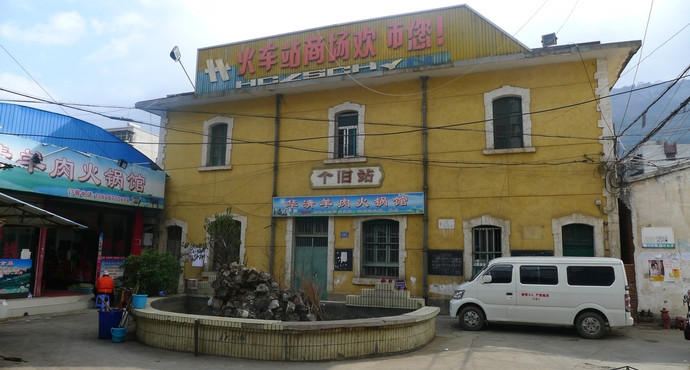
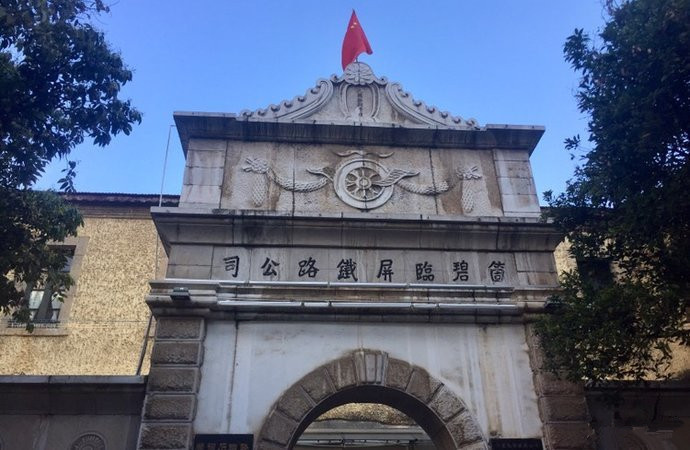
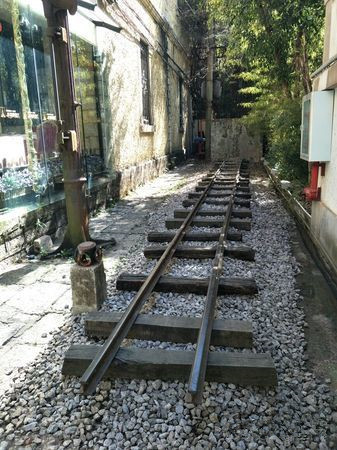
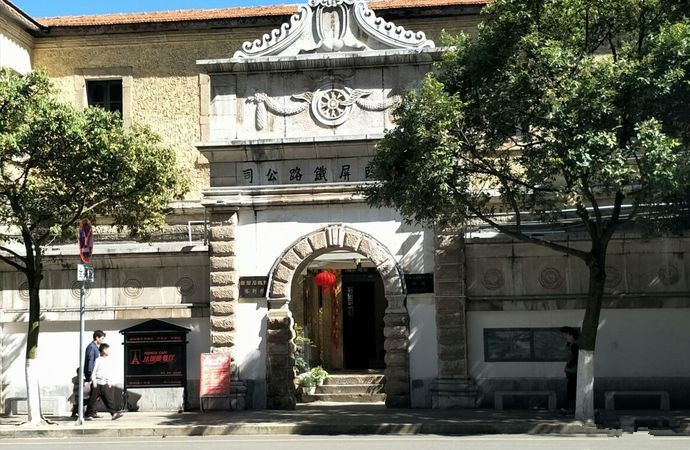
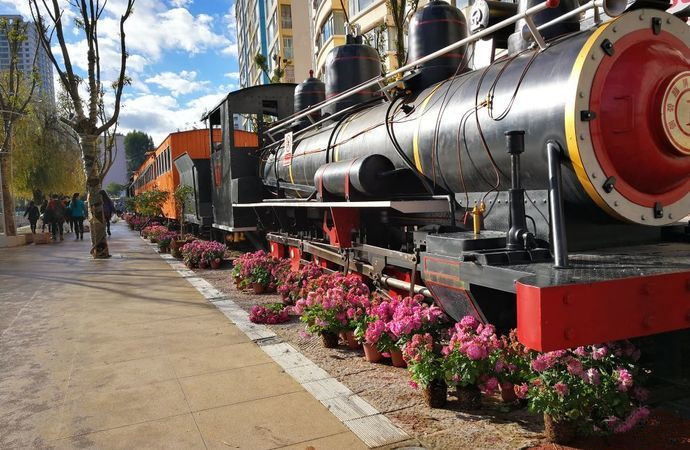
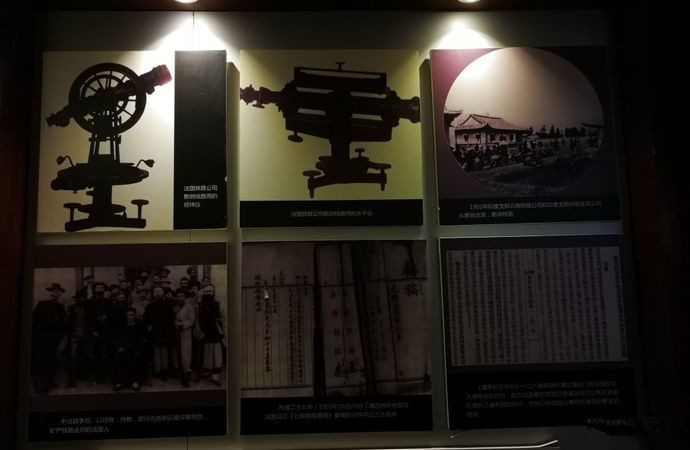
Location:
http://blog.sina.com.cn/s/blog_4ab27c4e0102w9cj.html
http://blog.sina.com.cn/s/blog_5b3a7acd0100amwy.html

 7 Days GolfingTour
7 Days GolfingTour
 8 Days Group Tour
8 Days Group Tour
 8 Days Yunnan Tour
8 Days Yunnan Tour
 7 Days Shangri La Hiking
7 Days Shangri La Hiking
 11 Days Yunnan Tour
11 Days Yunnan Tour
 6 Days Yuanyang Terraces
6 Days Yuanyang Terraces
 11 Days Yunnan Tour
11 Days Yunnan Tour
 8 Days South Yunnan
8 Days South Yunnan
 7 Days Tea Tour
7 Days Tea Tour
 8 Days Muslim Tour
8 Days Muslim Tour
 12 Days Self-Driving
12 Days Self-Driving
 4 Days Haba Climbing
4 Days Haba Climbing
 Tiger Leaping Gorge
Tiger Leaping Gorge
 Stone Forest
Stone Forest
 Yunnan-Tibet
Yunnan-Tibet
 Hani Rice Terraces
Hani Rice Terraces
 Kunming
Kunming
 Lijiang
Lijiang
 Shangri-la
Shangri-la
 Dali
Dali
 XishuangBanna
XishuangBanna
 Honghe
Honghe
 Kunming
Kunming
 Lijiang
Lijiang
 Shangri-la
Shangri-la
 Yuanyang Rice Terraces
Yuanyang Rice Terraces
 Nujiang
Nujiang
 XishuangBanna
XishuangBanna
 Spring City Golf
Spring City Golf
 Snow Mountain Golf
Snow Mountain Golf
 Stone Mountain Golf
Stone Mountain Golf


















